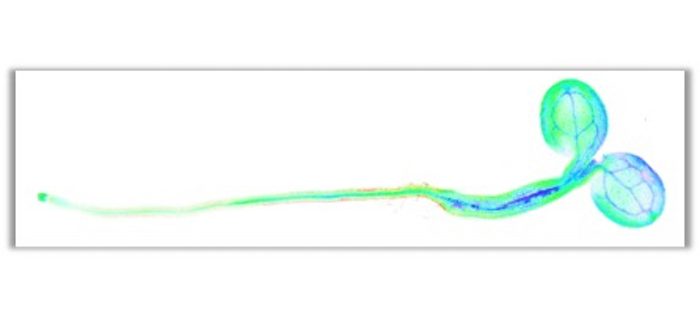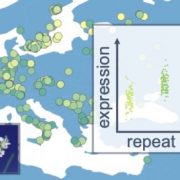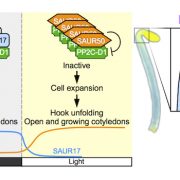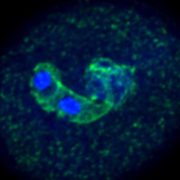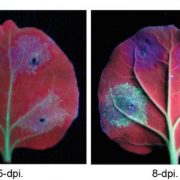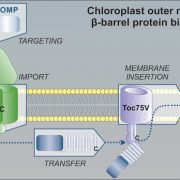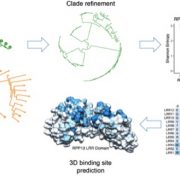Plant Metabolic Redox Dynamics–Live!
Steinbeck et al. investigate in vivo NAD redox dynamics in Arabidopsis. Plant Cell https://doi.org/10.1105/tpc.20.00241
By Janina Steinbeck and Markus Schwarzländer
Background: All organisms rely on their cellular metabolism to live, develop, grow, and procreate. Metabolism provides the energy, building blocks, and reductant (i.e., electrons) needed for these activities. A major proportion of the total electron flux of most cells runs through the nicotinamide adenine dinucleotide (NAD) redox system. NAD acts as a co-factor in central metabolism, shuttling electrons from and to pathways as central as respiration and glycolysis. In addition, NAD plays important roles in regulation through posttranslational protein modification and signaling crosstalk with hormonal pathways.
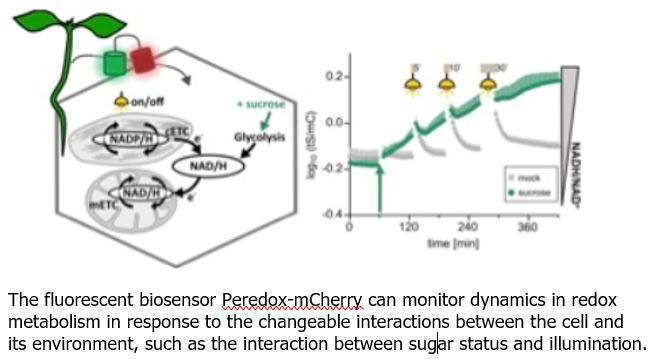 Question: Despite our exquisite mechanistic understanding of NAD biochemistry, its redox dynamics in living plants has been hard to assess directly. Yet, resolving the defining differences between tissues, cells, and cell compartments is critical if we are to integrate our biochemical understanding into a meaningful physiological framework. This is particularly limiting in green plant cells where two major bioenergetic redox machineries operate.
Question: Despite our exquisite mechanistic understanding of NAD biochemistry, its redox dynamics in living plants has been hard to assess directly. Yet, resolving the defining differences between tissues, cells, and cell compartments is critical if we are to integrate our biochemical understanding into a meaningful physiological framework. This is particularly limiting in green plant cells where two major bioenergetic redox machineries operate.
Findings: We explored the in vivo NAD redox dynamics in the model plant Arabidopsis thaliana using a fluorescent protein sensor called Peredox-mCherry. Focusing on the cytosol, the central compartment in which redox metabolism from the different cell organelles is integrated, we observed that NAD redox status is remarkably flexible in living plants, despite being a central hub in the metabolic network. We mapped the cytosolic NAD redox landscape in different cell and tissue types and monitored tissue responses to environmental cues such as light, external sugar supply, respiratory dysfunction, and hypoxia. We also engineered a new sensor variant that expands the range in which NAD redox measurements can be performed.
Next steps: In vivo monitoring of NAD redox dynamics opens the door to answering several long-standing questions, such as the relationship between cellular redox metabolism and developmental programs and the spatiotemporal signatures of NAD under stress conditions or during immune responses.
Steinbeck J, Fuchs P, Negroni YL, Elsässer M, Lichtenauer S, Stockdreher Y, Feitosa-Araujo E, Niemeier JO, Kroll JB, Humberg C, Smith E, Mai M, Nunes-Nesi A, Meyer AJ, Zottini M, Morgan B, Wagner S, Schwarzländer M. (2020). In Vivo NADH/NAD+ Biosensing Reveals the Dynamics of Cytosolic Redox Metabolism in Plants. https://doi.org/10.1105/tpc.20.00241


